A Trot Picture Gallery – a selection of Grand Prix and young horses. Dr Hilary Clayton tells us this about the trot, passage and piaffe:
“Both trot and passage have an aerial phase, but in piaffe there is no aerial phase. I tend to use the word ‘aerial’ rather than ‘suspension’ because when you say suspension, people think about a leg suspended in the air, not about all four off the ground, which is what I am talking about… in the piaffe it is like the diagonal movement of trot but the movement itself has more like the mechanics of the walk.”
Meet Dr Clayton: http://www.horsemagazine.com/thm/whos-who/clayton-dr-hilary/
“Everyone can see if a horse is pacing in the walk, and everybody can see if a horse has a four beat canter but to see if a horse REALLY trots diagonal, that’s a pretty big task. That’s something we really have to watch for, to make sure we have horses that really trot diagonally.” Susanne Miesner
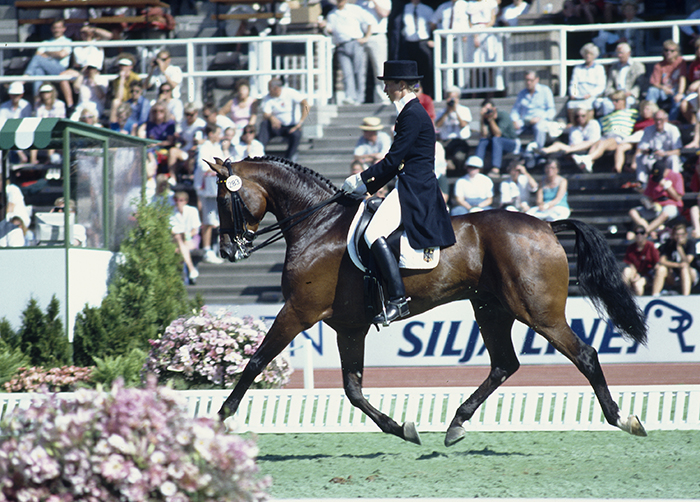
Rembrandt and Nicole Uphoff at Stockholm in 1990
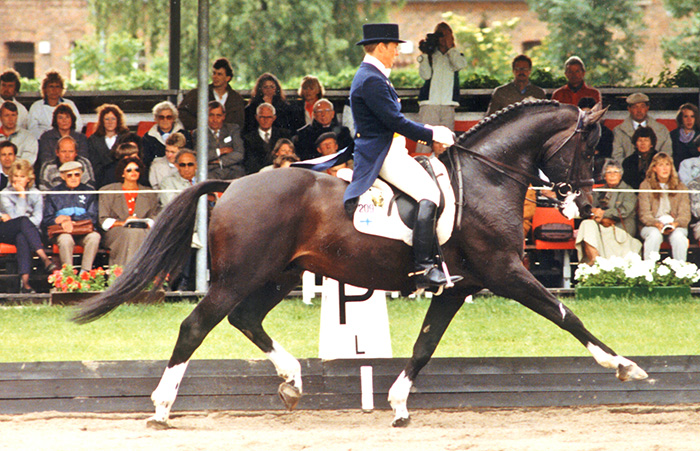
Matador and Kyra Kyrklund were also at Stockholm in 1990
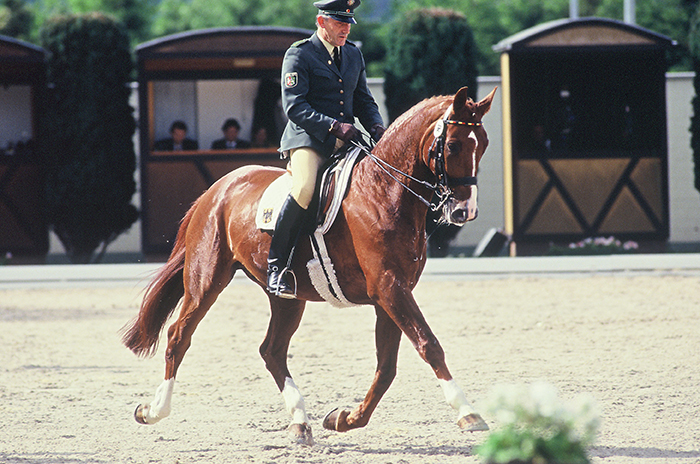
Klaus Balkenhol and Goldstern at Aachen in 1991
The trot is also the gait that can be influenced and improved upon the most, with proper training. In many cases the young horse has his trot completely ‘re-modeled’ somewhere between ages four and ten with the improved balance, strength, and rhythm that good riding brings.
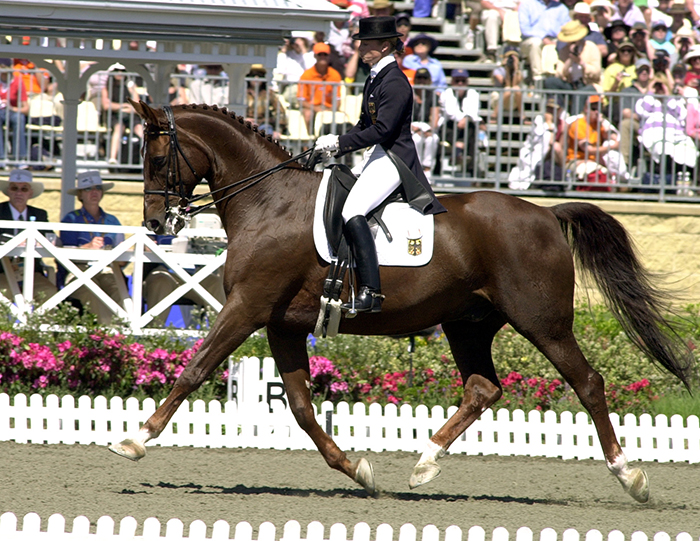
Isabell Werth and Gigolo in Sydney in 2000
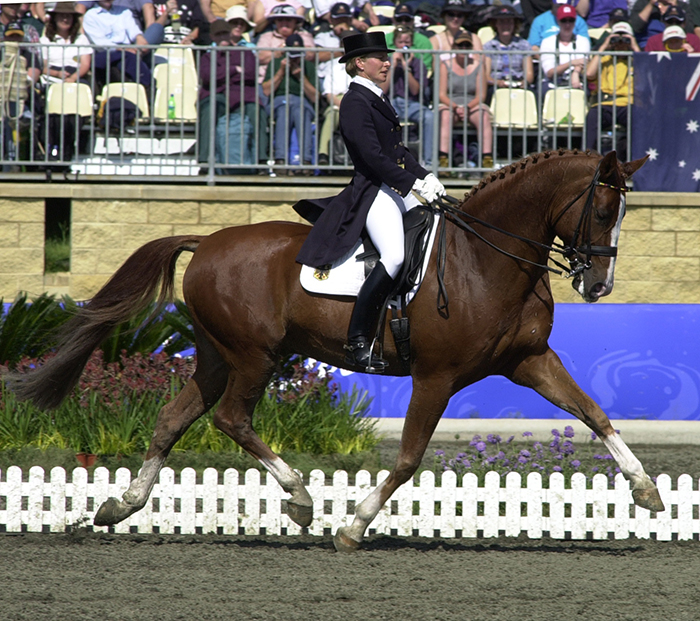
Farbenfroh and Nadine Capellmann…
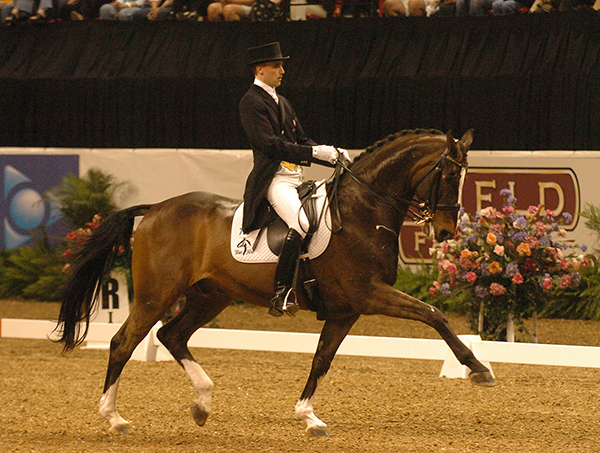
Blue Hors Cavan and Andreas Helgstrand in Las Vegas in 2005
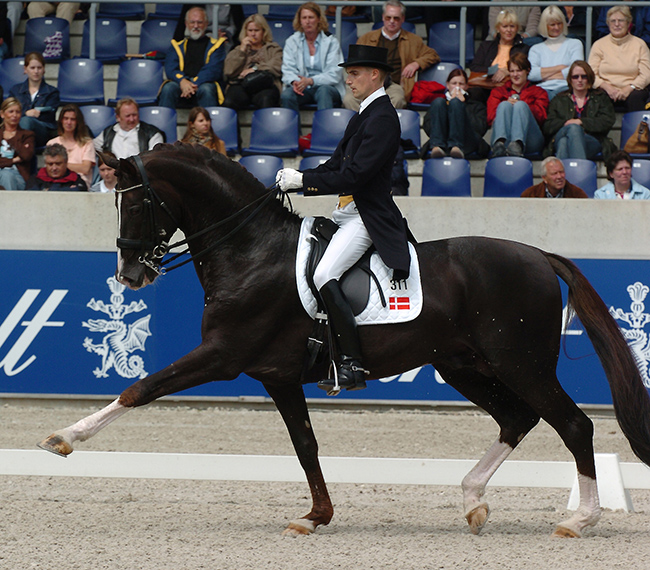
Next Andreas again with Don Schufro, a Donnerhall son, at Aachen in 2004
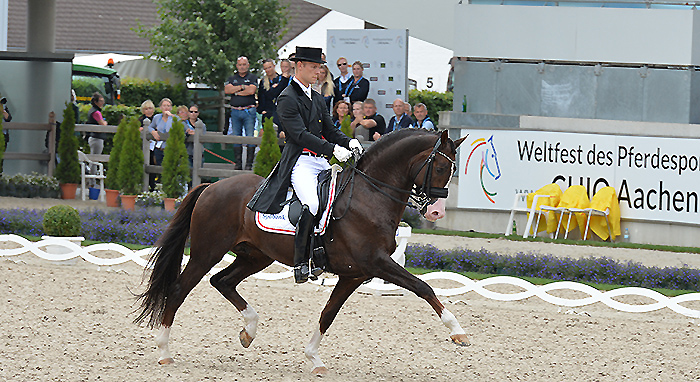
A Don Schufro son, Don Olymbrio at Aachen in 2017 with Thomas Andersen
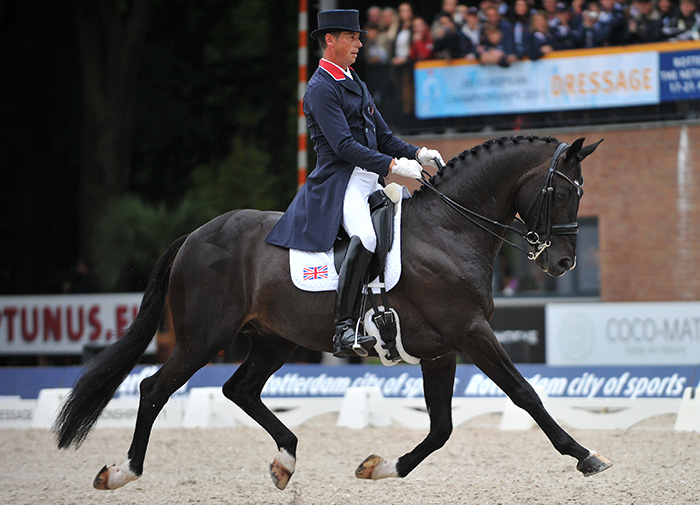
Carl Hester and Uthopia showing the suspension phase
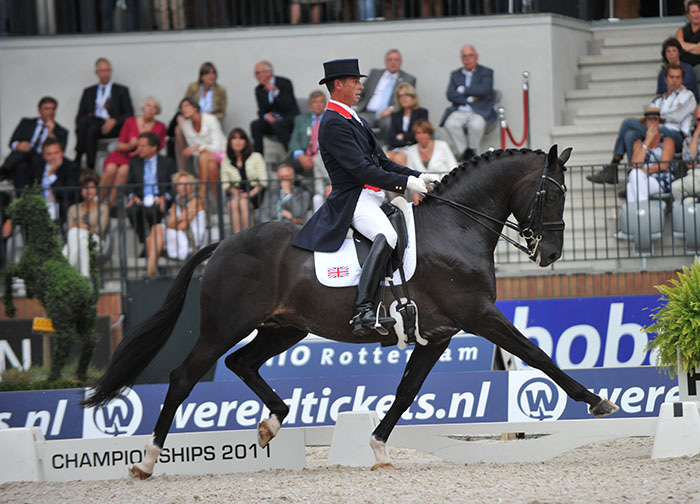
“First thing I look at when I buy a horse is paces rather than breeding. Beautiful parents don’t always produce beautiful children. I’m not looking for the flashiest paces, but also the trainablility and rideability. How are you going to keep a big, flamboyant mover sound into Grand Prix? You want an easy mover. This horse has the first thing on the scale of training: rhythm.” – Carl Hester
Here’s two trot images and some comments on the trot from Dutch Master trainer, Johan Hamminga – you can see the suspension phase Dr Clayton talks about in this one:
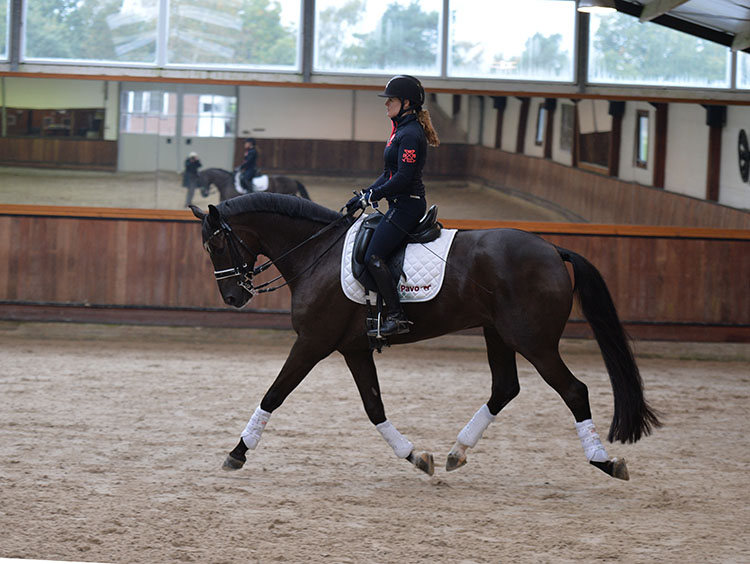
“Hind leg to the front, it is absolutely correct – the horse gives his body to the rider, and the rider sits in such a way that it is comfortable for the horse. Rhythm is the test of tenseness, and you can see that the rhythm is absolutely correct.”
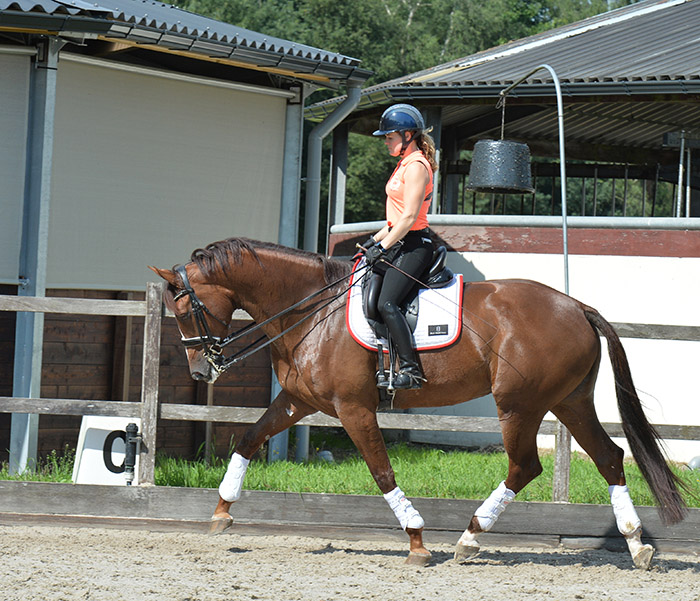
“That’s a nice moment, the horse is good in the tail, relaxed in the top line, soft on both reins, the neck falls down from the wither, the ears are pretty, eyes pretty, mouth is closed – smooth, a real contact on the bit, much foam, chewing… For me, in training, that’s a very good picture, but it’s a little bit too much behind the vertical. Here you see the inside hind leg is stretching very much, and there is an upward tendency in the whole topline, the mare is working in the right way, but the nose should be a little more forward, but she is not pulling, and the mouth is closed, there’s foam, eyes okay, ear is okay, the tail is okay – she comes up in the body. When the horse is forward, when the horse is using the hind leg more under the body and the neck falls down from out of the wither, then it doesn’t matter if the nose is a little behind the vertical if there is no pulling by the rider. Pulling is always a disaster.”
Now no more words, just trot images to consider
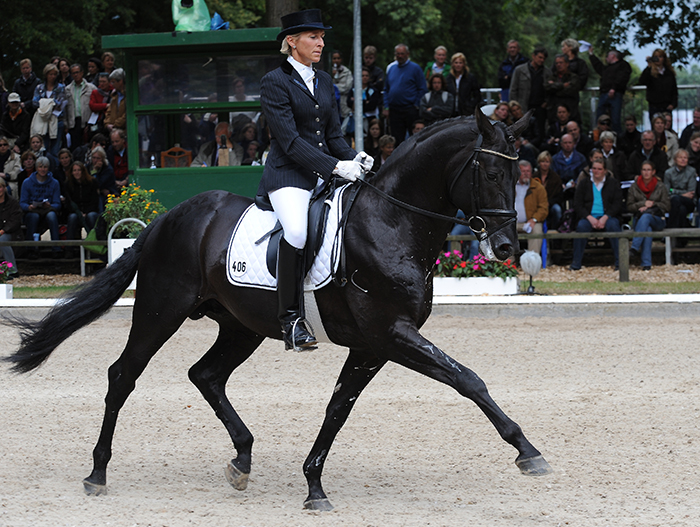
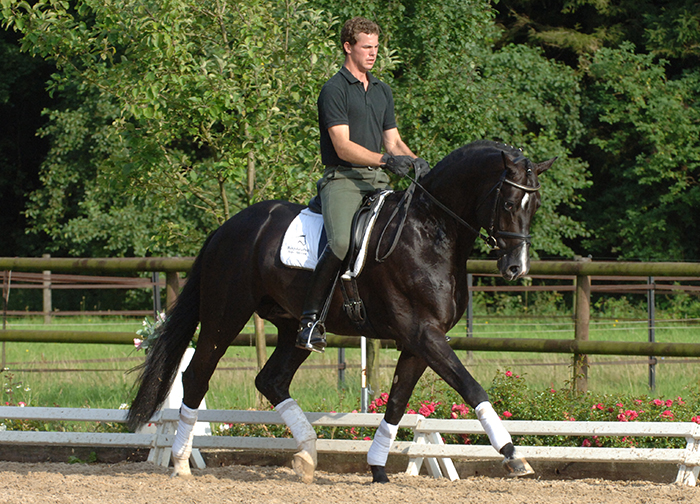
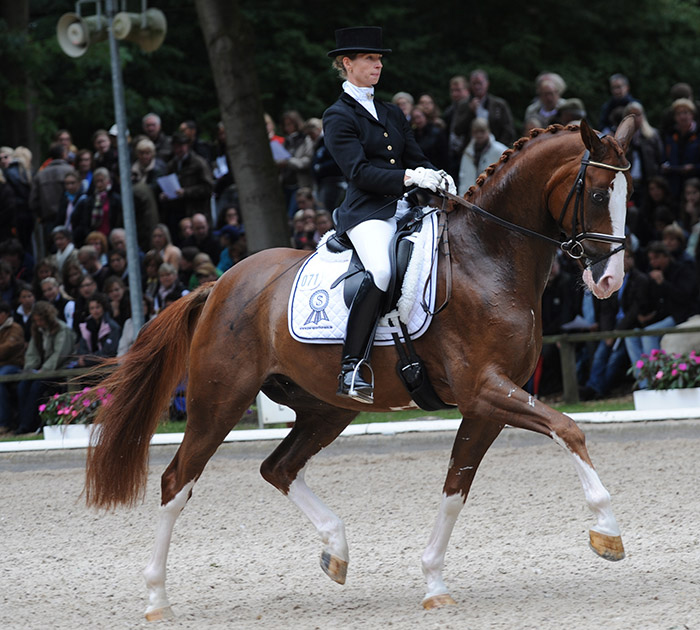
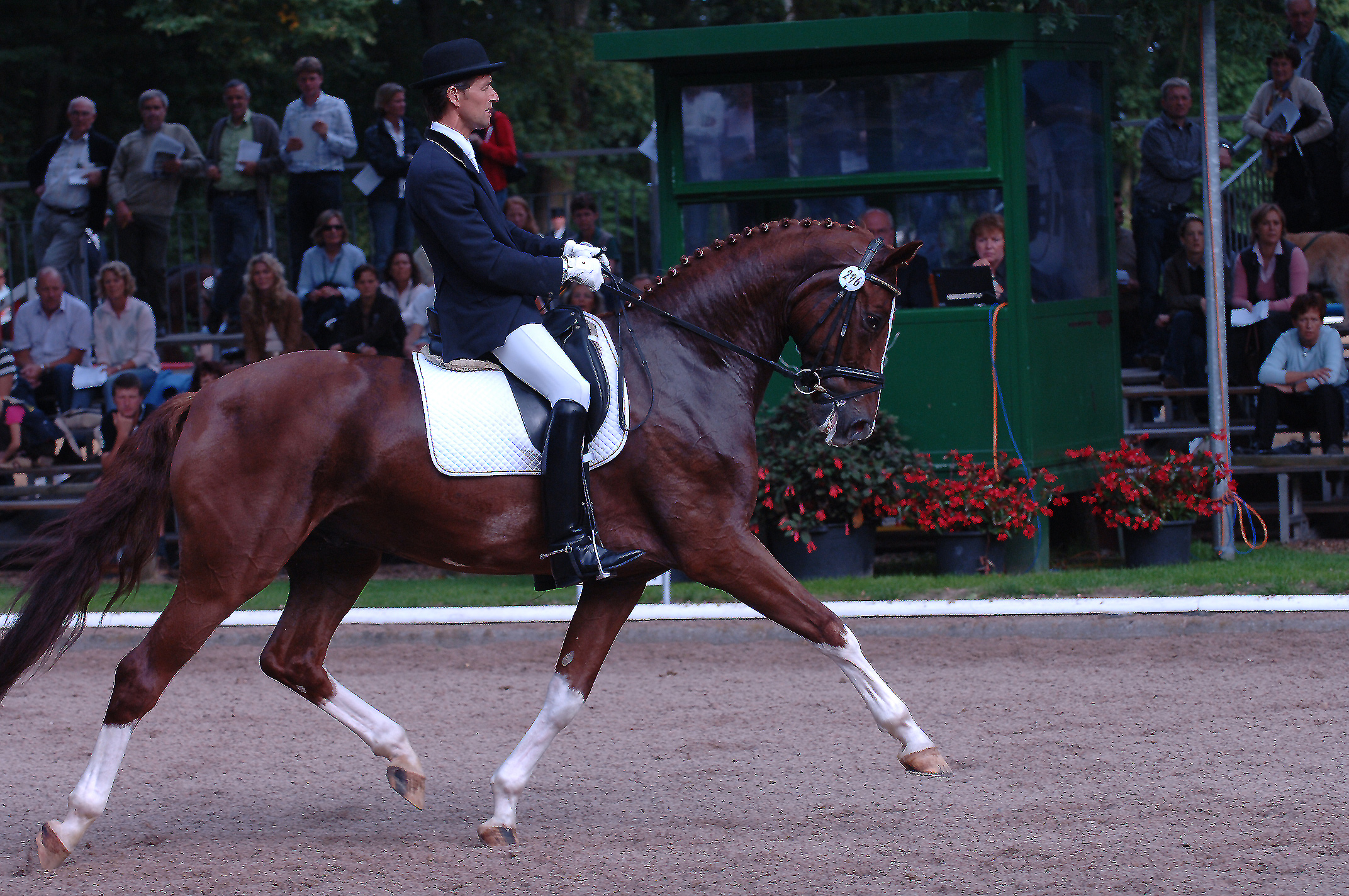
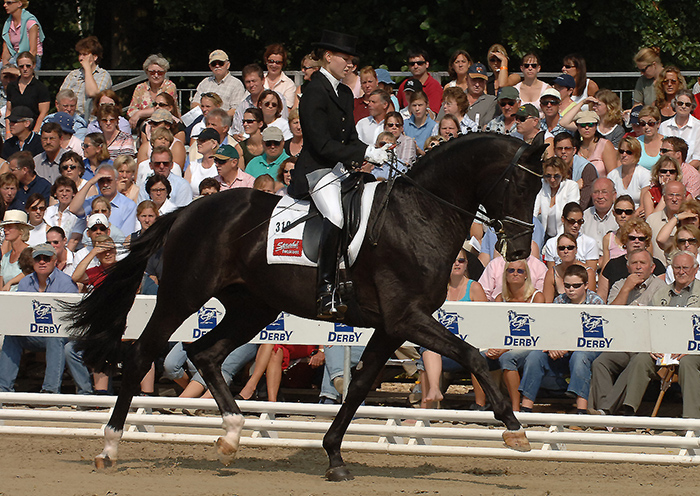
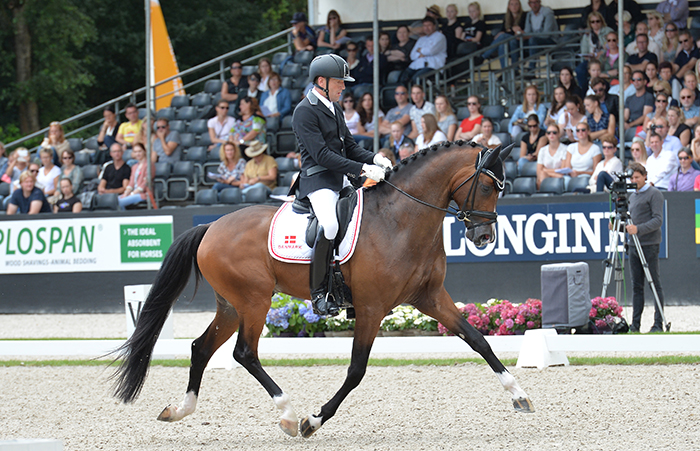
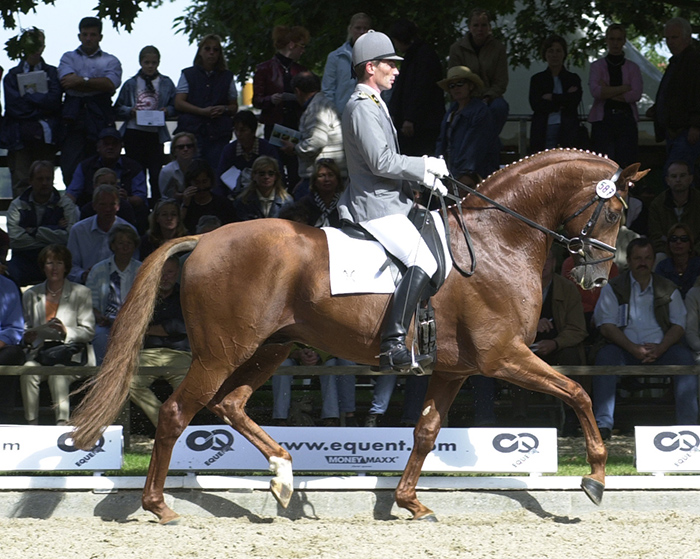
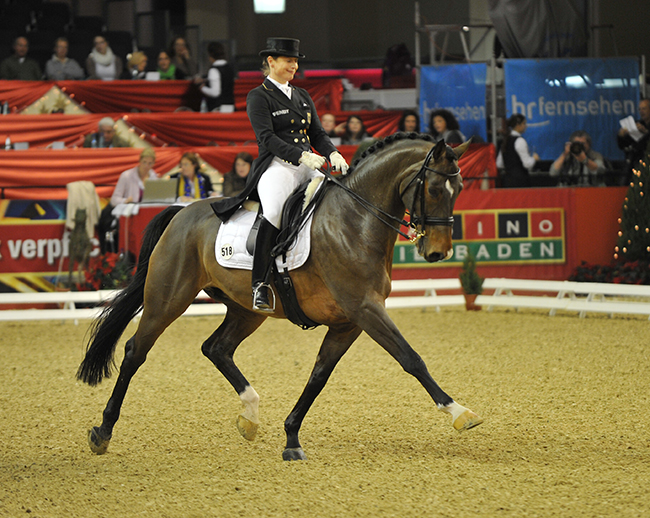
And we finish with Isabell Werth, this time with El Santo
Available for the 2024 season from International Horse Breeders – Benicio, and many more exciting stallions: www.ihb.com.au
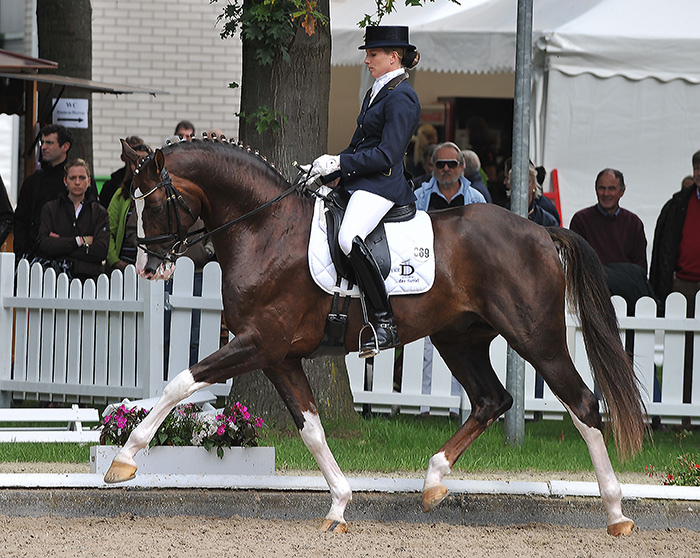
Benicio
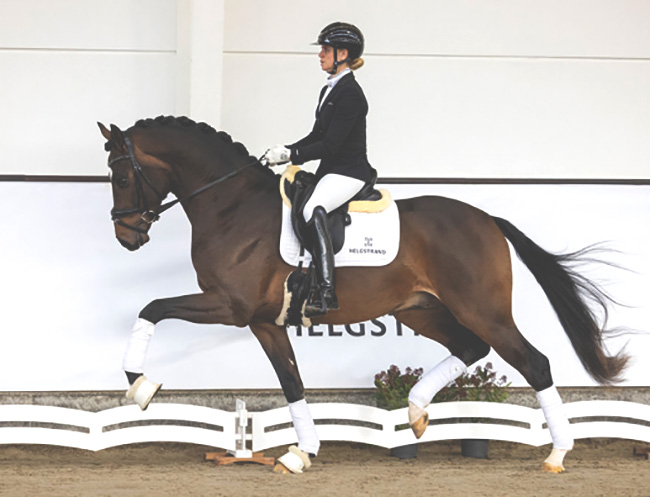
V-Power
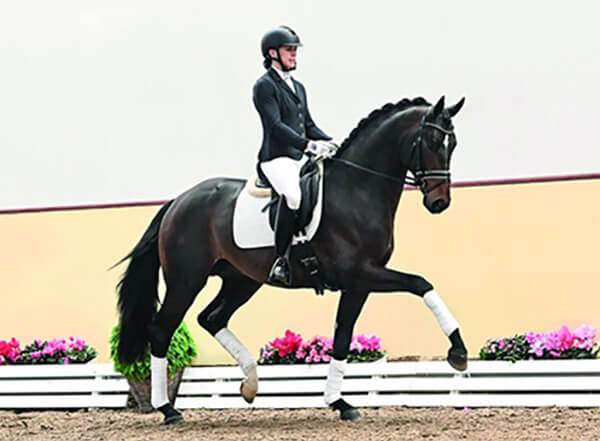
Escanto


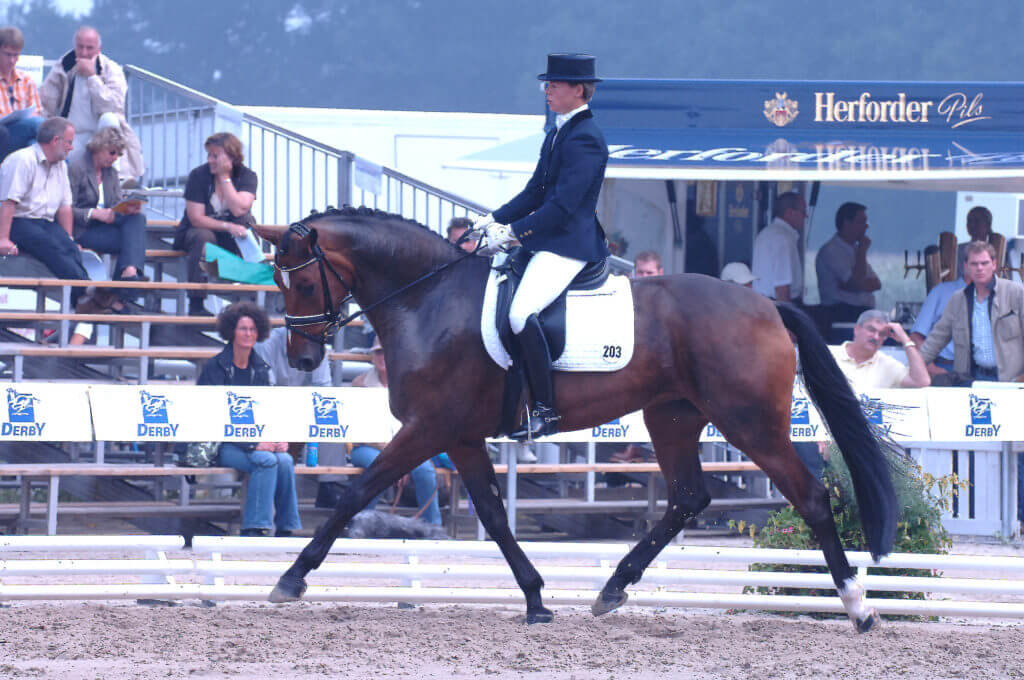
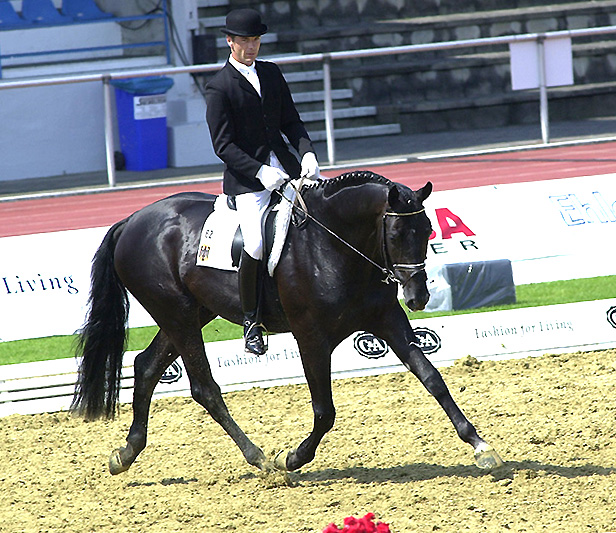
Gee, two of these famous riders look like utter crap.